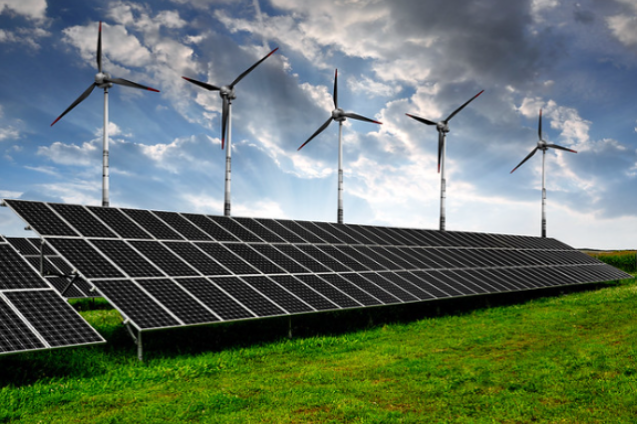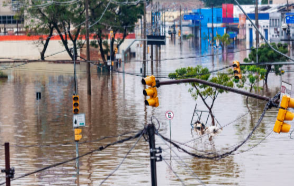Global warming is a human-caused problem that was discovered in 1896. It’s primarily a result of the world’s most abundant greenhouse gasses: carbon dioxide, methane, and nitrous oxide, though it’s worth noting that there are many other greenhouse gasses that contribute to global warming on a much smaller scale. Greenhouse gasses are typically produced when fossil fuels are burned, such as coal, gas, and oil. According to the US Environmental Protection Agency, carbon dioxide is the most abundant greenhouse gas, contributing 79.4% of the United States’ greenhouse gas emissions in 2021. Knowing that fossil fuels release Co2 brings into question what causes carbon dioxide to be released into the atmosphere. With this information, we can create reasonable solutions in order to stop such emissions.
1: Transportation – 28% of Carbon Dioxide Emissions
According to the US Department of Transportation, the United States contains over 4 million miles of road and 160,000 miles of highways, which enables drivers to cover significant distances in relatively short amounts of time. However, due to the majority of cars running on gasoline, driving results in serious carbon dioxide emissions. It is not much of a surprise that transportation within the US contributes roughly 28% of the nation’s greenhouse gas emissions. While cars are a large factor of this percentage, it is important to also keep vehicles such as trains, buses, and planes in mind; especially planes, which according to Terrapass.com, on a 200 mile trip, would release about 109 pounds of carbon dioxide per passenger, meaning that there would be about 21,800 pounds of carbon released into the air. Granted, a car would emit about 120 pounds of Co2 for the same trip, but that’s for the entire trip. This means that if you were to have a car of three people, you would be releasing 40 pounds of carbon dioxide per passenger, rather than the airplane’s 109. While trains and buses can be carbon-heavy, they are forms of public transportation that can carry hundreds of people at a time, ultimately lowering the carbon footprint of all passengers.
Consider investing in an electric car–such as a Tesla for example– to avoid direct carbon dioxide emissions. If a trip is under 200 miles, avoid taking an airplane, and if possible, try to take public transportation and/or carpool with other people. If it’s less than two miles, try walking or riding a bike.
2: Electricity – 25% of Carbon Dioxide Emissions
Electricity has become ingrained in human culture, making its production necessary to keep the modern lifestyle afloat. However, 60% of electricity in the US is produced with fossil fuels, which is problematic. Another 20% of the country’s electricity is produced using nuclear energy, which opens up a new issue regarding nuclear waste and meltdowns. The remaining 18% of our country’s energy is produced by renewable sources that emit negligible amounts of carbon dioxide, such as hydroelectric, wind, and solar energy. Additionally, using sources such as nuclear and fossil fuels is unsustainable, and we will eventually run out of fuel for them, further incentivizing the use of renewable energy.
While the production of electricity in the country isn’t up to the people, you can still take action by installing solar panels on your roof, which if combined with the efforts of others, can help lower the needs of fossil fuels. Additionally, petitioning the government can influence our future energy sources.
3: Buildings – 13% of Carbon Dioxide Emissions
Buildings are a bit more complex regarding their CO2 emissions. While they directly contribute to 13% of our carbon emissions through the heating and cooling of our houses and establishments, they indirectly contribute roughly 30%, as electricity wasn’t taken into account with this 13%, and most electricity is used inside of buildings. People have to use lights, appliances, charge their devices, regulate the temperature in their house, and do countless more things in their houses, all of which require electricity.
Be aware of how much electricity you use. Turn lights off when you aren’t using them, and make sure you aren’t using unnecessary heating/cooling when you don’t need to, and getting a temperature regulation system with an eco mode would help ensure that.
Other sources of CO2
There are still many other contributors to our carbon dioxide emissions, but we can’t do much to avoid them. This includes the various industries within the US, which contribute roughly 23% of our nation’s carbon emissions. However, this mostly comes from burning fossil fuels for energy and chemical reactions within specific industries. There isn’t much an individual can do besides petitioning for said industry to stop burning fossil fuels and to find alternative ways to produce their products. This is the same case for the agricultural industry. They produce necessities and contribute to roughly 11% of our carbon emissions. Now, the only solution for this would be to lower the demands for meat products and rice, which are the main factors of Co2 emissions when it comes to agriculture. Unless enough people abstain from these products to greatly reduce their demand, then there is nothing we can do about it.
Carbon dioxide emissions are avoidable; we just need many people to take action against it to truly make a difference. So, spread the word! When you hear someone is buying a new car, suggest an electric vehicle. Get solar panels, write to the government… do whatever you can to prevent further carbon emissions. The earth is going to be around a lot longer than we are, so we should all do our part to take care of it.
Reference:
https://www.fhwa.dot.gov/policyinformation/pubs/hf/pl11028/chapter1.cfm
https://www.epa.gov/ghgemissions/sources-greenhouse-gas-emissions
https://terrapass.com/blog/carbon-footprint-of-driving-vs-flying-whats-best-for-the-earth/
https://www.epa.gov/ghgemissions/overview-greenhouse-gases
https://www.eia.gov/tools/faqs/faq.php?id=427&t=3















![[Shark Fin Soup] by [Harmon] is licensed under [CC BY-ND 2.0]](https://flhsprospect.com/wp-content/uploads/2025/04/Screenshot-2025-04-24-8.24.37-AM.png)
